Thunk! Julie Moir Messervy ’73, out for a walk in the springtime woods in southern Vermont, pitches a fallen branch into the underbrush beside the trail. And another one—thunk!
“I can’t help myself,” laughs Messervy, whose vocation is shaping landscapes into places of beauty and inspiration, whether it’s a tiny Cambridge, Mass., backyard, a lakeside public park in Toronto, or a pine-needled path in the woods.
The landscape designer and author’s most recent book, Landscaping Ideas That Work, was published in January by Taunton Press. It joins seven others she has written in the last two decades, including Contemplative Gardens, The Inward Garden, and Home Outside.
Driving through the rolling meadows and wooded hills around Saxtons River, Vt., Messervy points out vistas and assesses landscaping. The bare ground around a handsome, newly built barn on a prosperous-looking hobby farm “needs us,” she says.
“Us” is Julie Moir Messervy Design Studio (JMMDS), the landscape architecture and design firm of which Messervy is principal. After practicing for 20 years in Boston, Messervy has lived and worked for nearly 9½ years in Saxtons River (pop. 558). The firm may be located in a small-town former tinsmith’s shop with wide-board pumpkin pine floors and steep, creaky stairs, but its work is international in scope. “Four people work here with me,” says Messervy. “It’s a great little team.”
JMMDS has designed landscapes for private residential clients all over New England, in the Southwest, in British Columbia, in the Caribbean, and elsewhere. Its public projects include parks and arboretums, museums, cemeteries, academic and corporate campuses, and children’s gardens. Numbered among its clients are the City of Greenville, S.C.; the Arnold Arboretum of Harvard University; the Massachusetts Horticulture Society; and the Lewis Ginter Botanical Garden near Richmond, Va.
When Messervy begins a project, she makes an effort to connect with her client’s “inward garden,” that joyful, emotional landscape that begins in childhood and adds accretions of other beloved places through time. It’s those earliest places in the natural world that really matter, Messervy believes, becoming the foundation for a garden of the mind that she helps re-create—or at least refer to—in a client’s present, outdoor space.
She also turns to memories of her own childhood landscapes, her daydreaming places, for inspiration. “I grew up in Illinois, outside Chicago, in a house that was surrounded by undeveloped land,” says Messervy, who’s one of seven children. “At that time, there was a lot of that. We were just at the edge of a forest, with pine trees that I’d play under. There was a big one, with all these fallen pine needles under it. We’d make little forts there. We had a pond next door that was owned by other people, but we’d skate there all the time. And it had little streams running into it—the streams were really important to me. We had an old apple orchard on our road, with really old apple trees, the gnarlies. And we’d make our forts up there, too.”
An estate, since subdivided, was also in the neighborhood, and Messervy and her siblings spent hours playing in its grounds. “I remember being aware of the beauty of the plants around that old estate. There was an older woman who lived in a little apartment in one of the outbuildings, named Miss McAdams,” she recalls. “We called her ‘Scadams.’ And [she] was a landscape architect, a designer. She loved plants, and she loved design. And I think, without my realizing it, she was an influence.”
Messervy followed her mother, artist Alice Butz Moir ’48, to Wellesley, and studied art history. “Wellesley was so beautiful,” she says. “Of course the spoon-holders were great, and the Italian Garden. I used to row crew, so getting up at 5 a.m. and being on that lake with the mists of the changing seasons and the colors of the changing leaves, and seeing the perfectly manicured space against the roughness of a New England fall was so beautiful. That was my favorite part of Wellesley, rowing crew on the lake.”
She began taking classes at MIT during her undergraduate years, and later earned a master’s in city planning and architecture there. “I wanted to do something out in the world that involved making things,” she says. An MIT course on East Asian architecture and design led her to the kinds of landscapes that continue to inform her work. “I opened up a book on Japanese gardens, and I fell madly in love,” she says. “It was because of the daydreaming places; it reminded me of my childhood places—the pine tree, the pine needles, the moss. I said, I know how to do this.”
A Henry Luce Foundation fellowship allowed Messervy to study in Kyoto, Japan, with garden master Kinsaku Nakane. He sent her off to look at gardens for months before she was allowed to prune a single branch. “Eventually, in the early spring, he put me in the gardens. My [Japanese] was better by that time, and I started digging and pruning. But I wasn’t a horticulturist. … It was about space, always about making space.” (Messervy would work with her mentor again when they installed the Boston Museum of Fine Arts’ Japanese-style Tenshin-en, the Garden of the Heart of Heaven, which is currently undergoing restoration and is slated to reopen in 2015.)
Back in the United States, Messervy finished MIT and went to work for an urban design firm—which soon closed. “At that very minute—what serendipity—somebody called wanting a Japanese-style garden in Rockport, Mass.,” she recalls. “That was the first garden—and the rest is history.”
Part of that history was an exciting collaboration with cellist Yo-Yo Ma in 2000. The result is the Toronto Music Garden, a three-acre public park on the water in downtown Toronto. Its inspiration was the Suite No. 1 in G Major for Unaccompanied Cello by Johann Sebastian Bach. Curving paths guide visitors through six garden “movements” that flow from the different moods, feelings, and forms evoked by the piece. “I listened to the music to see people moving through the space,” Messervy recalls.
These days, getting people to move through space in their own yards is a big part of the landscape designer’s mission. What’s keeping us indoors? First, there is the fear: People find the idea of designing a landscape or a garden intimidating, Messervy says. Then, there are the screens—and not the kind that enclose porches.
“There are so many screens in our lives, and they’re so fascinating,” she says, pointing to her iPad. “It’s so seductive, and it’s more powerful than anything we’ve created before. What’s more fascinating than being able to go into Google and find out anything you want to know? And then we spend all day here. People forget that to be outside, and to put your hands in the dirt, or to move things around, is equally fascinating, because you’re doing it yourself and you’re feeling good, and your body’s moving, your brain is working.”
So Messervy wants people to get back out in the dirt, which is one reason she wrote Landscaping Ideas That Work. She hopes the book demystifies the design process and helps people make the outdoor portion of their property as important—and functional—as the indoors is. “That’s the way life ought to be—living as much outside as inside,” she says. (See the sidebar below, “How Does Your Garden Grow?” for some ideas for your own garden.)
She also advocates sustainable gardens that support the natural environment rather than adding to its burdens. “All of our clients, everyone, no matter how wealthy or not wealthy they are, really do want to live lightly,” she says.
She advocates a “new homesteading” that involves planting vegetable gardens, installing solar panels and “green” roofs, and putting in drying yards and rainwater collection systems—and may well be the subject of her next book.
Messervy’s own piece of Vermont landscape is some 200 acres at the top of a steep dirt road, overlooking a meadow, old stone walls, and a slowly expanding beaver pond.
“I’ve never, ever finished a garden of my own,” she laughs. “I’ve moved. I’ve had kids. Here, I have beautiful perennials, and I have a great swimming pond, and a forest that’s just being logged. It’s still in a state of becoming.”
How Does Your Garden Grow?
At her lectures about how to approach designing your own garden, Julie Moir Messervy often shows an aerial photo of a newly built American neighborhood. There are tidy white houses, squared-off lawns, neat streets, empty driveways—and not a tree, bush, rock, or flower in sight. “Isn’t it a sad state of affairs that the only landscaping, the only sign of life, we see [in this photo] is a Weber grill?” she says. “We can do better.”
Speaking at a master gardener’s symposium in Rhode Island, Messervy said that people fear going outside—“It’s so big!”—yet they can create landscapes they love in their own backyards.
First, think about your family and how you will live in a space—your style, your temperament, and your needs for the property. Do you want a play space for small children? A patio or lawn for entertaining? A contemplative place for meditation? A vegetable garden? A badminton court? Make a wish list of the projects you’ll need to undertake to create the environment you dream about.
Of course, you’ll also need to understand the basic, practical aspects of your personal piece of landscape, including its sun and shade, its slope, and its soil. Here are some tips for getting started:
- Observe site conditions to get to know the amount of sun and shade your property gets throughout the year, which will affect where you decide to place a patio, locate a tree, or plant a sunny cutting garden.
- Take soil samples to learn about your soil’s composition—the health of your garden plants depends on it. Take samples to your local agricultural extension service for analysis and advice.
- Get to know your garden center. Visit your local nursery or garden center four or five times a year to see what’s in bloom at different seasons. “Find out what you love,” Messervy says. And don’t be afraid to try growing it. Too often, people are afraid to kill a plant or put one in the wrong place—but plants are the most malleable part of the landscape.
- Observe what works when, and where. New gardeners can learn a lot by keeping records of bloom times on their own property or visiting other gardens and taking notes on successful planting combinations. Join a garden club, or hire a gardening coach, Messervy suggests, to learn from a master.
- Create native plant zones. “Nonnative plants are not good for birds, insects, or wildlife,” says Messervy. “Native insects only eat native plants, and native birds eat native insects. So the food chain needs native plants—and it needs big swaths of them.” She recommends the work of Douglas Tallamy, author of Bringing Nature Home, as a resource for figuring out what natives to plant in your area.
JMMDS also offers assistance to do-it-yourselfers with the “Home Outside Palette,” a landscape design app for the iPhone, iPad, Android, and desktop computer. The app invites you to enter the dimensions of your space and design your own garden. The updated version, released this spring, has a measuring tool and a drawing tool and allows you to put Google maps behind your plan, so you can try out garden configurations on top of your actual landscape.




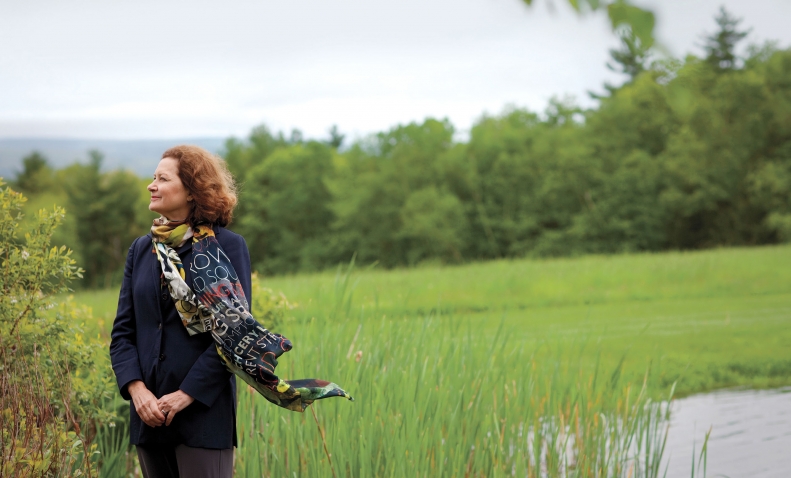
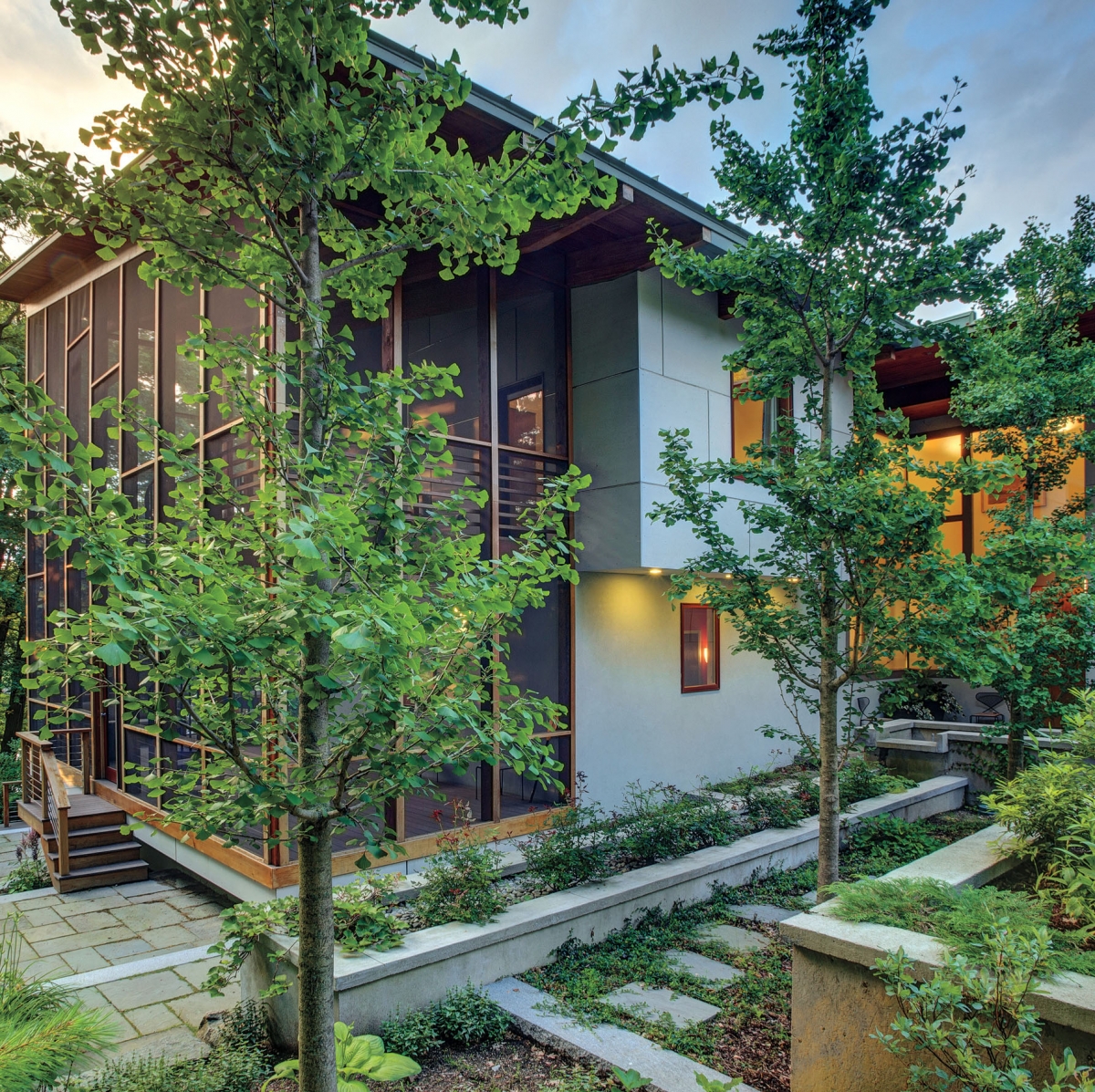
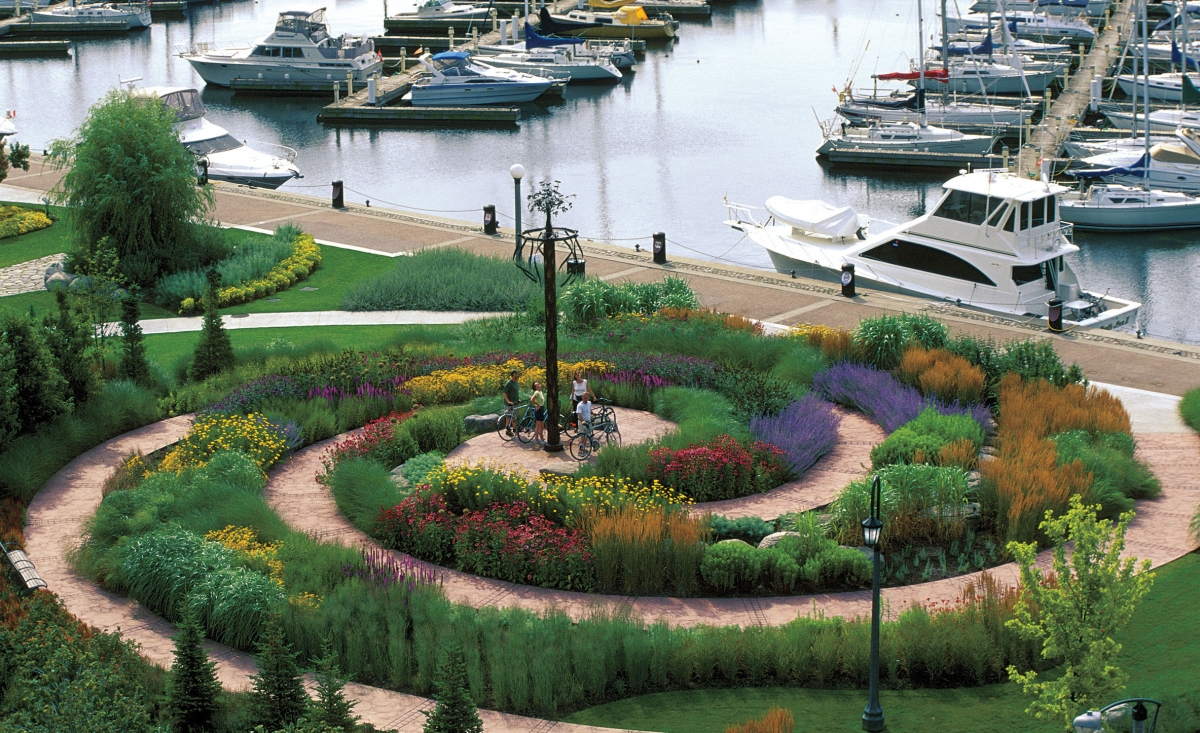
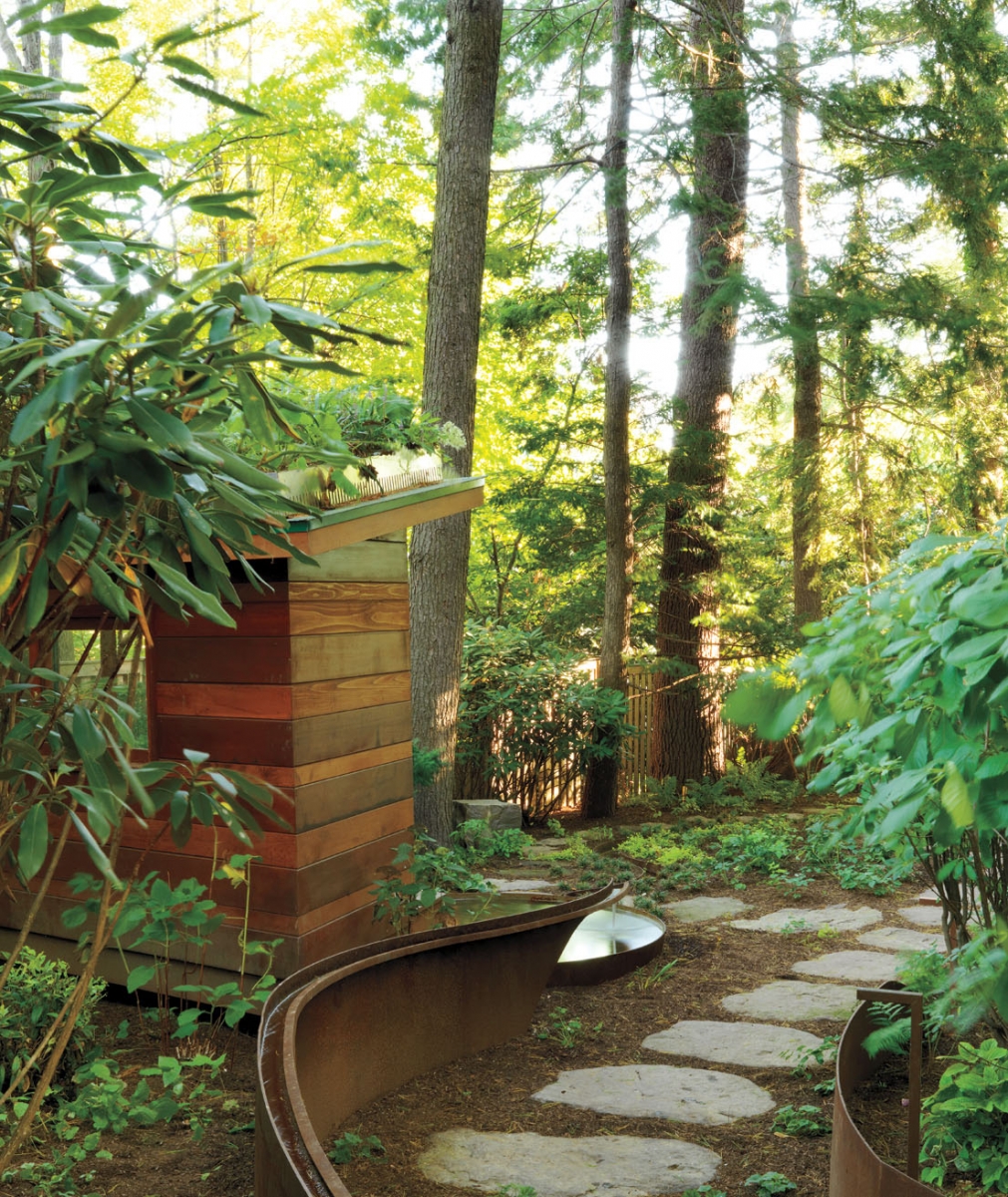

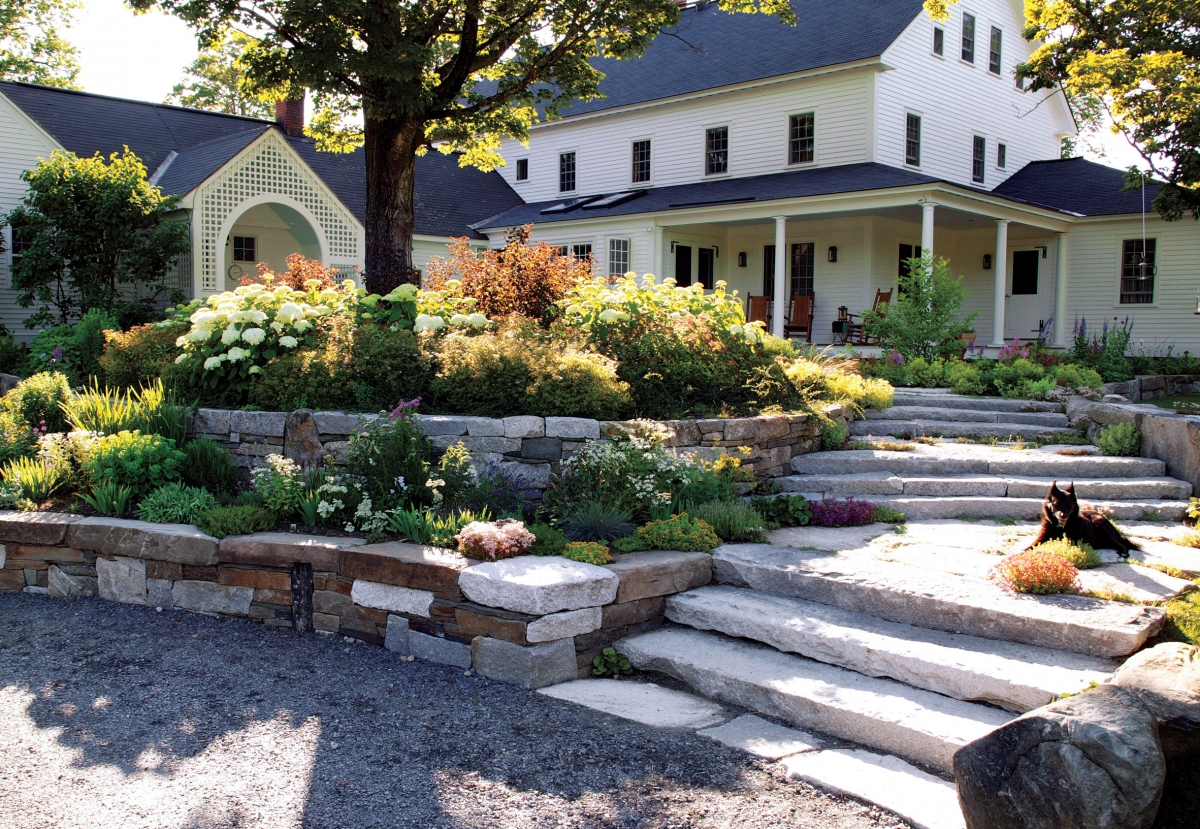
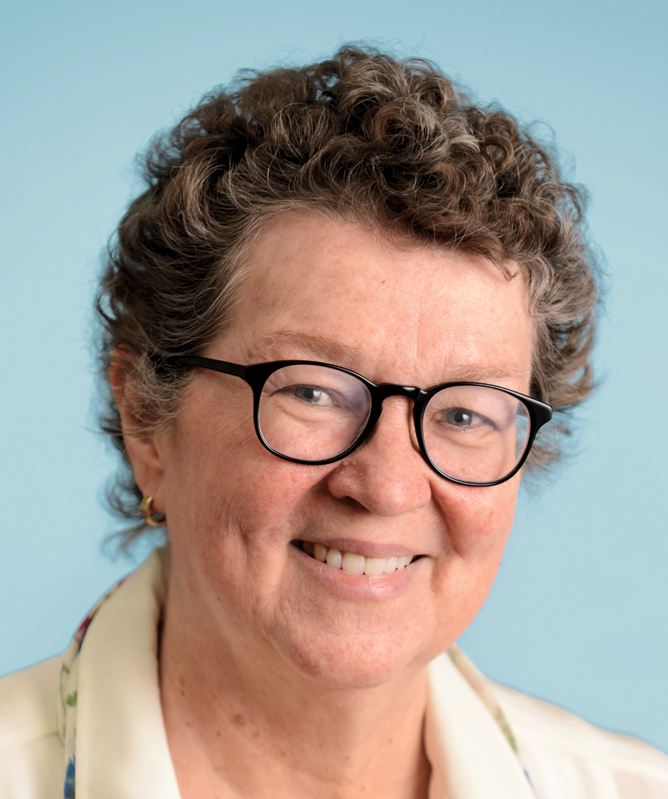


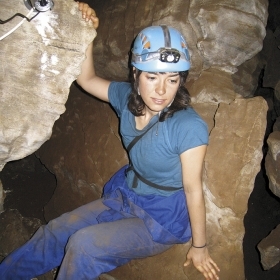
We ask that those who engage in Wellesley magazine's online community act with honesty, integrity, and respect. (Remember the honor code, alums?) We reserve the right to remove comments by impersonators or comments that are not civil and relevant to the subject at hand. By posting here, you are permitting Wellesley magazine to edit and republish your comment in all media. Please remember that all posts are public.